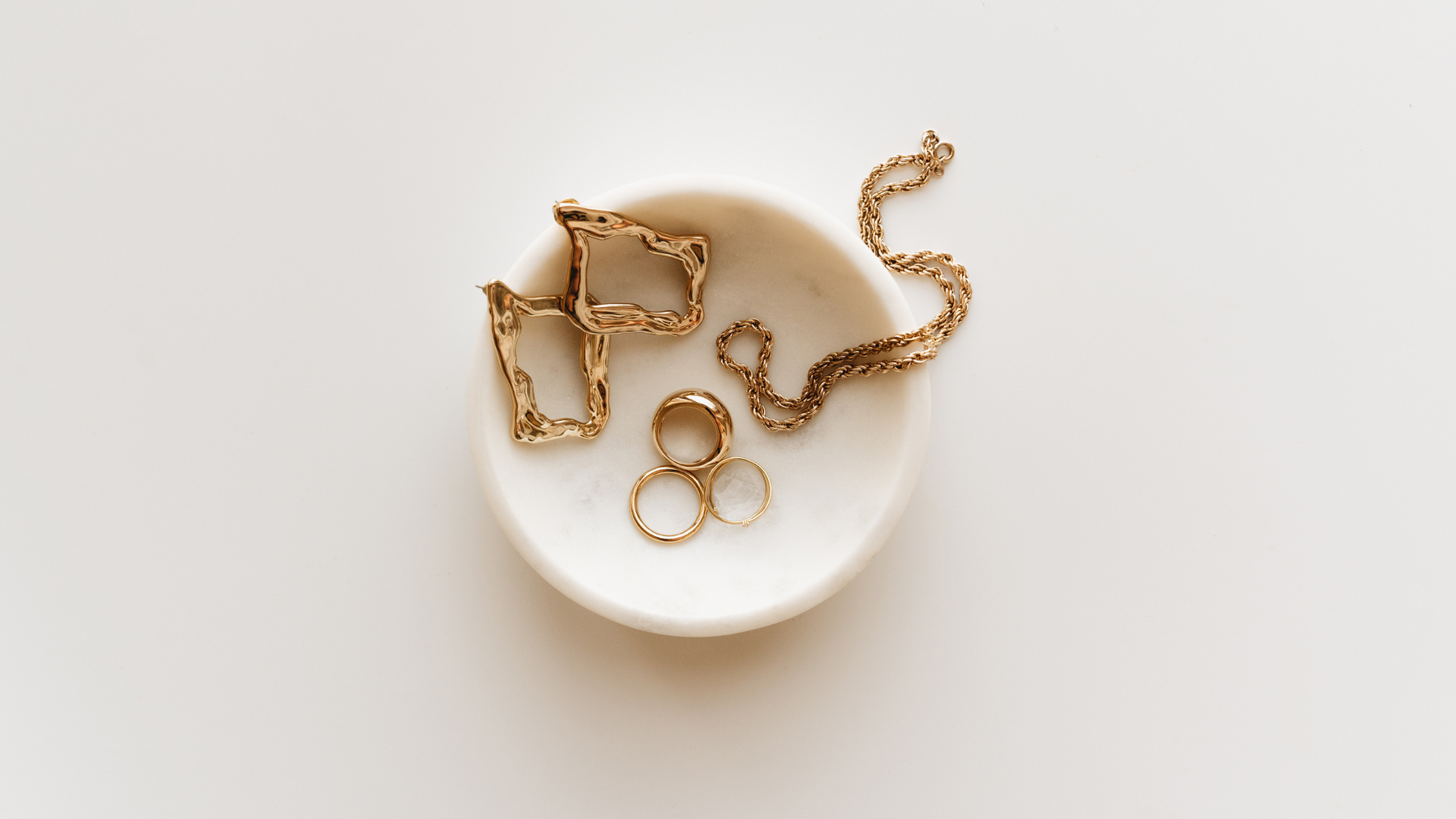Unveiling the Shine: All About 18k Gold Plated Jewelry
The world of jewelry can be dazzling, but sometimes a bit confusing. Among the many options, 18k gold-plated jewelry has emerged as a popular choice. But what exactly is it? This blog post peels back the layers and explores everything you need to know about 18k gold-plated jewelry.
Understanding the Layers: Base Metal and Gold Plating
18k gold-plated jewelry is not solid gold. Instead, it features a base metal, usually sterling silver or brass, coated with a thin layer of 18k gold. The "18k" refers to the gold content of the plating, meaning 75% gold and 25% other metals for added strength and durability. The plating process, called electroplating, uses an electric current to securely bond the gold layer to the base metal.
The Enchantment of 18k Gold Plating
The appeal of 18k gold-plated jewelry goes beyond its resemblance to solid gold. Here are some key benefits that make it a compelling choice:
Affordability: Compared to solid gold jewelry, 18k gold-plated pieces offer a significantly lower price point. This opens the door for a wider audience to experience the beauty of gold jewelry and build a more extensive collection without breaking the bank.
Style Versatility: Unlike solid gold, which typically comes in a classic yellow shade, 18k gold plating offers a wider range of color options. You can find pieces in classic yellow gold, trendy rose gold, or elegant white gold. This allows you to experiment with different styles and perfectly complement your unique wardrobe and taste.
Longevity with Proper Care: With proper care, 18k gold-plated jewelry can last for years. The thickness of the plating plays a significant role in its lifespan, with thicker plating generally lasting longer. Here are some tips to extend the life of your plated jewelry:
- Avoid wearing it during activities that could cause scratches or dents, such as exercising or gardening.
- Remove your jewelry before showering, swimming, or applying harsh chemicals like lotions or perfumes.
- Store your plated jewelry in a cool, dry place when not in use, preferably in a fabric pouch to prevent scratches.
Considering the Limitations
While 18k gold-plated jewelry offers undeniable advantages, it's important to be aware of its limitations:
Eventual Wear and Tear: Over time, exposure to everyday wear and tear or harsh chemicals can cause the gold plating to fade or rub off, revealing the base metal underneath. This is especially true for pieces with thinner plating.
Not an Investment: Unlike solid gold jewelry that holds its value over time, 18k gold-plated pieces are not considered an investment. Their value comes from their aesthetic appeal, not the gold content itself.
Is 18k Gold-Plated Jewelry Right for You?
Choosing between 18k gold-plated jewelry and solid gold depends on your individual needs and preferences. Here are some factors to consider:
- Your Lifestyle: If you're very active or hard on your jewelry, solid gold might be a better long-term investment due to its superior durability.
- The Occasion: For special occasions where you desire a more substantial feel and lasting piece, solid gold might be the preferred choice.
- Budget: If you're on a budget and prioritize affordability and style versatility, 18k gold-plated jewelry is a fantastic option.
Unveiling Elegance at Ishi New York
At Ishi New York, we believe that everyone deserves to experience the joy of wearing beautiful jewelry. We offer a curated collection of 18k gold-plated pieces, crafted with high-quality materials and meticulous attention to detail. Explore our collection and discover the perfect way to add a touch of gold and timeless elegance to your everyday look! Click here to visit our store









